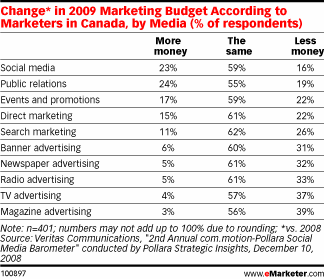 Eric Alterman (right) lays waste to the value of political endorsements, which news organizations would have to sacrifice if they took public money. Who cares? asks Alterman, calling endorsements a “near total anachronism” in a world in which readers have so much choice of information. Endorsements haven’t been meaningful in a long time, say Alterman, journalism scholar Kathleen Hall Jamieson’s conclusions in a 2004 study that “The direct effect of editorials does not appear to be significant…” So why is this such a hot potato in the public funding issue? The loss of the power to endorse candidates is often cited as the primary barrier to a public-funding solution for dying newspapers. In fact, endorsements work against news organizations, Alterman argues. “What endorsements do…is convince readers that the news they receive is being colored by bias expressed on its editorial pages.” And that perceived bias is a much bigger threat than endorsements that the public largely ignore. Alterman admits, reluctantly, that public funding may be the only approach that keeps journalism in the public interest alive. So get over the issue of taking sides in political debates.
Eric Alterman (right) lays waste to the value of political endorsements, which news organizations would have to sacrifice if they took public money. Who cares? asks Alterman, calling endorsements a “near total anachronism” in a world in which readers have so much choice of information. Endorsements haven’t been meaningful in a long time, say Alterman, journalism scholar Kathleen Hall Jamieson’s conclusions in a 2004 study that “The direct effect of editorials does not appear to be significant…” So why is this such a hot potato in the public funding issue? The loss of the power to endorse candidates is often cited as the primary barrier to a public-funding solution for dying newspapers. In fact, endorsements work against news organizations, Alterman argues. “What endorsements do…is convince readers that the news they receive is being colored by bias expressed on its editorial pages.” And that perceived bias is a much bigger threat than endorsements that the public largely ignore. Alterman admits, reluctantly, that public funding may be the only approach that keeps journalism in the public interest alive. So get over the issue of taking sides in political debates.
Salon.com offers similar hope in profiles of several nonprofit organizations that are struggling to get by. It profiles Voice of San Diego, MinnPost.com and ProPublica, which are three startups producing quality journalism on a shoestring budget. Each has a somewhat different revenue model, with ProPublica existing largely at the behest of philanthropic funding while Voice of San Diego and MinnPost.com have hybrid models that include advertising, reader subscriptions and foundation support. All three operations have had some notable successes, but the journalists who work there admit that the working conditions are demanding.
Joel Kramer, the editor and CEO of MinnPost, works without a salary and one of his reporters, Jay Weiner, traded in an $80,000-a-year job with a pension, health insurance, vacations and overtime at the Minneapolis Star Tribune for a post that pays about $700 for a 60-hour work week, with no benefits. Weiner’s motivations are altruistic. “I am so happy to not be at the newspaper,” he says. “We’re growing, there is freedom, we’re all involved in a product that we really want to make as good as possible.”
It’s exhilarating stuff, but even the leaders of these fledgling organizations admit that a publicly funded model is not the solution for big newspapers. “”Tell people to send us money,” says Kramer, in a plea that’s only half in jest.
Bostonians Confront a Globe-less Future
With its liberal bias and nudge-nudge political insiderism, the Boston Globe has long been a lightning rod for criticism in New England. But with the region now facing the prospect of losing its largest daily newspaper, people of all political stripes are rushing to its side. Bloggers rallied last week to think up ideas to rescue the paper, which the New York Times Co. has threatened to close in a few weeks if the unions don’t make dramatic concessions.
More than 20 prominent Boston bloggers rallied last week to voice their support for the Globe (we can’t find an organizing body, but Beth Israel Deaconess CEO Paul Levy lists the participants), debating ideas ranging from public funding to subscription fees. Everyone seems to agree that local ownership is a necessity, particularly since so many local institutions have been swallowed by out-of-town owners in recent years.
The problem is that no one knows of any local investors who are willing to put up the money. There were rumors of a consortium organizing to buy the Globe back from the Times Co. a few years ago, but that talk ended when the newspaper industry tanked.
The Times Co.’s demands are rankling Globe unions. Management has reportedly asked Teamsters Local 1, which represents about 250 full- and part-time mailers, for $5 million in concessions, or about $20,000 per person. Demands include a 25 percent wage cut, near-virtual elimination of company healthcare contribution, elimination of sick and holiday pay and the end of lifetime job guarantees enjoyed by about 145 mailers. This is on top of concessions by the mailers two years ago that cut average pay by about $10,000.
Meanwhile, Globe writers are doing a little rallying of their own. Columnist Scot Lehigh asked readers last Wednesday to weigh in about the paper’s future and hundreds of them did, most with positive comments, he says. In fact, “I was surprised by how many subscribers said they’d pay more – some substantially more – for home delivery if it would help save the paper,” Lehigh says. They may soon get their wish. The Globe hiked its newsstand price by up to 40% last week. Many people also said they’d be willing to pay a fee to use Boston.com, the Globe’s successful Web venture. Lehigh thinks that’s a great idea: “It’s time we gave them the chance,” he concludes.
It’s a nice thought, but a subscription scheme would probably go the way of Times Select before too long. The problem is, as Alan Mutter phrased it in our recent interview, “Giving away all this content for free was the original sin.” Boston.com is the sixth largest newspaper website on the Internet, which is an accomplishment, since the newspaper is only the 14th largest in the US. Imposing a pay wall would send traffic down 90%. The Globe would then have a lot of explaining to do to advertisers. The flight of ad dollars would probably more than cancel out the reader revenue.
And then there’s the demographic elephant in the corner. Speaking to a class of University of Massachusetts students and administrators last week, we asked how many had read a printed newspaper within the last 48 hours. Out of approximately 45 people in attendance, five hands went up. Four of them belonged to people over the age of 35.
Hyper-Local Startups Gaining Traction
Neighborhood-based online news startups are proliferating, says The New York Times in a story that profiles three of them. Among the new entrants are EveryBlock, Outside.in, Placeblogger and Patch. Funding models range from angel investment to foundation grants but each startup agrees that geographic relevance is core to the news.
EveryBlock uses human editors to gather links to news stories and combine them with material posted by the burgeoning number of neighborhood bloogers. Patch pays journalists in each town it covers to attend school board meetings and interview people in coffee shops. Outside.in scans articles and blog posts for geographical cues and organizes the content by community.
They’re hoping to tap into a local online ad market that Kelsey Group estimates will double to $32 billion by 2013. Small business advertising needs are still being served predominantly by the Yellow Pages, making this the great frontier of online advertising.
The story questions whether the collapse of local newspapers will also kill off these startups, but EveryBlock’s Adrian Holovaty says, “In many cities, the local blog scene is so rich and deep that even if a newspaper goes away, there would be still be plenty of stuff for us to publish.”
Miscellany
The publisher of the Palm Beach Post won’t win many friends in the blogosphere with statements like, “The only information on the Internet worth reading for hard news is produced by news agencies like ours.” But that’s not surprising, considering his newspaper is “your ticket to democracy… Seventy-five cents a day is a small price to pay for freedom.” Or hyperbole.
Comments
This entry was posted on Monday, April 13th, 2009 at 8:31 am and is filed under Fake News, Google, Hyper-local, Solutions. You can follow any responses to this entry through the RSS 2.0 feed. Both comments and pings are currently closed.




And the revenue situation will just continue to deteriorate as more and more businesses move to the web.
There won’t be any papers left unless they can find a new business model.
My own ideas of funding the news by subscriptions and individual issues via the postal service is not a panacea but it would rescue some publishers.
I’m very much encouraged at/by hyper-local news.
Specially if the publishers make the news available in a .PDF and leave the expense of printing the paper to the reader.
“your ticket to democracy… Seventy-five cents a day is a small price to pay for freedom.” Or hyperbole.
Ha! Good one.
[…] Nonprofits Struggle, Survive | Newspaper Death Watch […]
[…] Nonprofits Struggle, Survive | Newspaper Death Watch […]
What some of us is missing, who looks at ads on the websites, I know I don’t and others, I still buy the paper for most of my buying, cars, food, furniture, etc…
The paper believe me will not go away, the weeklies are strong as ever also. The magor players will always publish a newspaper, what will happen is the salaries will continue to shrink, right now in the Newspaper industry has done very well paying their employees for years and along other manufacturing company’s, the demand is not their today for most of the products out their.
I work in the Newspaper industry and today we were told that we are okay for another 10 or 15 years.
But I do believe the local weeklies will survive.